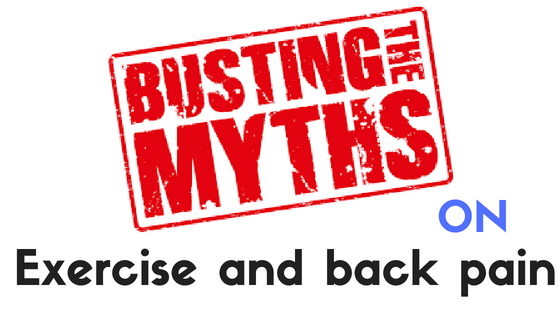
Not all exercise is created equal. In fact, when it comes to sensitive lower backs there is a lot of misinformation about exercise, you often hear from your doctor, trusted trainer or even therapist that just isn’t true. Today, I want to break down those common myths about exercising and low back pain and give you some direction on how to not fall into following these common traps.
Whether you are looking to get into exercise or just looking for a place to start, this article is for you!
I am sure you already know after a few searches for yourself that there is a lot of different info coming from a lot of different sources. What I want for you after reading this is to challenge the info you read (even mine). I write and speak from years of fighting my own low back injury so I know where you are. Back pain is complicated with a long winding road and I want nothing more than to make your path a little straighter.
let jump in!
Myth: Exercise is a one-stop shop for reducing lower back pain
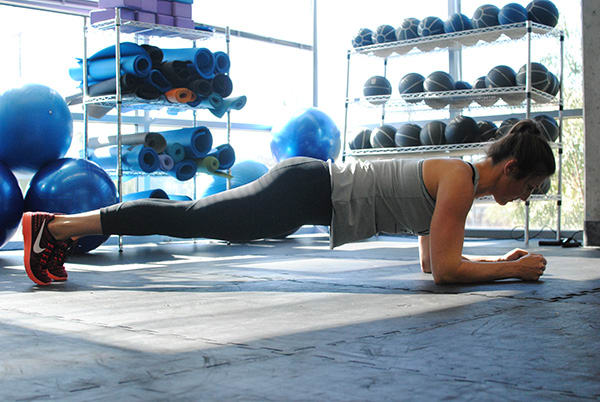
There is a lot of truth to this but let’s navigate the negatives.
I see it time and time again. People have the right intentions when it comes to starting an exercise program for pain relief but they don’t have the right guidance and application to their own personal situation.
From the hip, more exercise sounds like a great plan.
Your doctor tells you exercising more will help with your lower back pain.
You think to yourself; it has been a while since I went to the gym and I do sit all day. Maybe he/she is right.
Maybe the gym IS the solution….
The tricky side of exercise.
There is a neurological effect from exercise that does give the illusion that you are experiencing a lower level of irritation and discomfort. This should NOT be taken as what you did helped and that doing more is beneficial (this is especially true after you have a few days to evaluate how your body has been affected by the previous day’s workout).
When you workout, your body releases hormones known as endorphins which can mask a lot of symptoms and irritations you were experiencing before the workout. Where people go wrong is they chase this momentary pain relief instead of listening to their body.
This is the difference between long-term healing and short-term, band-aide relief.
If you experience pain 3-5 hours after a workout odds are what your doing in the gym is not helping your healing process. What I suggest you do is focus on how you move and use your body first.
If this is you check out the free resources below on a place to start.
Learn to stack your segments well
Scapular Control: Tissue Release and Strengthening
Follow these videos one after another a few times a day and you will be off to the races towards healing.
Focus on these for a few months and slowly add weight to challenge these new habits and postures. Your goal with exercise is to challenge the good posture. Not just load the body and make it move.
Myth: Strengthen the area in pain
Have you ever heard this from your doctor?
Your lower back hurts because it’s weak. Do some lower back exercises to relieve the pain
At first glance this makes sense. The area is tired and weak. Make it big and strong and it won’t be so weak and painful.
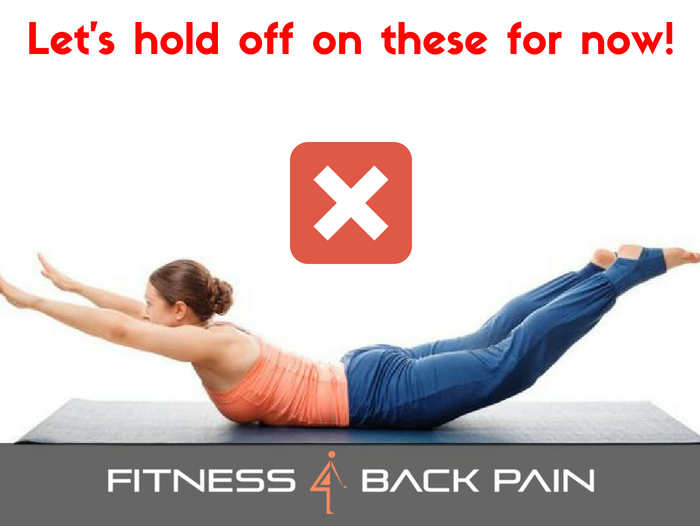
This leads to you hitting the back extension machine, deadlifts and those weird banana looking exercises and only making things worst. What I have known to be true is the root cause of your lower back pain isn’t usually from a weak back but a weakness in the quality of your movement and your trunk engagement. A lot of people don’t understand how to use their trunk properly to brace the spine effectively while they move. Instead, their body just bypasses the trunk and loads the lumbar spine during common daily tasks such as bending, twisting, and lifting.
Instead of hammering the lower back with direct work take a different approach.
I have developed this theory of working from the inside out. I am convinced that if we focus on the most important area on our body (The middle) first, the rest of the body will be so much easier to get on board,
I tend to focus on three areas first.
- The way we breath
- The Position of the pelvis (Refer back to this video
- The stability we create with our trunk. What I call “Core Locking”
- This is a great way to make sure you are bracing properly!
Once you have made sure these are dialed in spend a few weeks mastering the exercise below.
Myth: Squats and Deadlifts fix everything
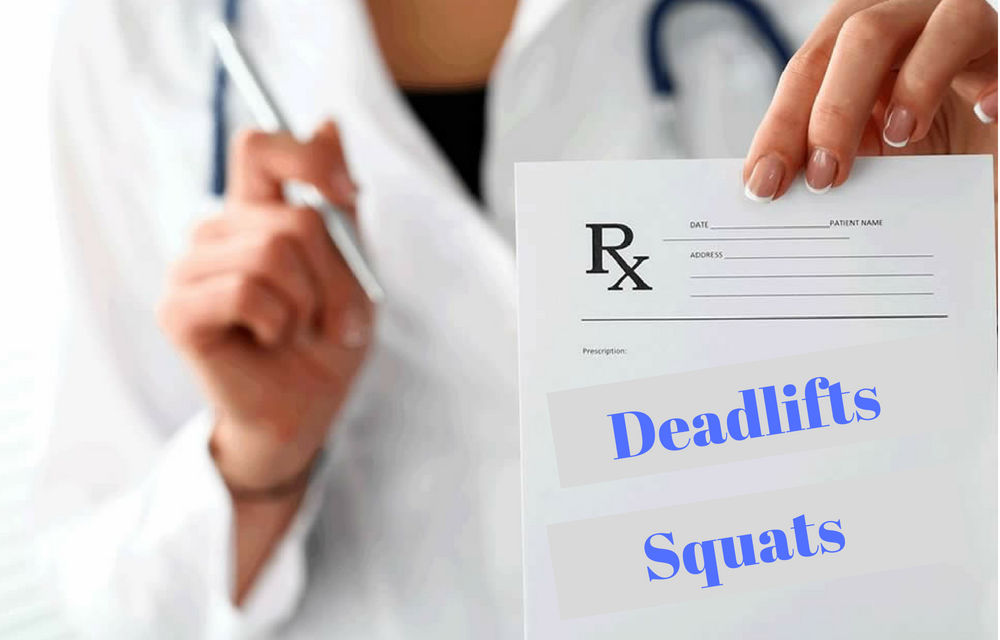
No, they don’t.
There are coaches who firmly believe that the loaded squat and traditional deadlift were handcrafted by Jesus himself to repair all spine issues.
They preach that in order to be “normal” and “healthy” you should be able to and currently doing, squats and deads.
I agree that the squat and traditional deadlift are fundamental movements. Heck, I even use the squat and hip hinge to break ground on movement assessments I do with clients. I just don’t see the point in pushing the envelope to the point where you feel these need to be done in order for you to feel healthy and strong. These are key mechanical abilities but loading these movements all the time, while always striving for more weight just isn’t a good long-term investment.
Where I land with loading the squat and traditional deadlift.
If loading a bar and squatting hurts then don’t do it. It’s not about body hardening or allowing your knees, hips, lower back and/or shoulders to adapt to the exercise. There are all kinds of variations of the squat and deadlift that you can do without loading the spine that still challenges the muscle groups without the risk of doing these exercises wrong. At the end of the day, not everyone has a coach they can call for form checks and technique when it comes to squats and deadlifts. If that’s you, don’t sweat it, move on. Nobody is going to remember how often you deadlifted or how much weight you could do.
Take care of yourself and lift smart.
Myth: More ab work equals a stronger spine.

Eh not so much. Simply doing more ab work is not the way you want to look at core stability. I spent a lot of time studying and experimenting on this topic and what I learned to be true was its not so much a weak core we are dealing with its the lack of coordination we have in our trunk while moving.
If I went to punch you in the stomach your natural reaction would be to contract your abs. $10 says you will do a pretty good job at protecting your internal organs from that punch. It’s the way I believe God created us (to do a good job at the basics) So why do doctors say our cores are weak?
Laziness
Lack of understanding
Outdated education and knowledge on the topic
just to name a few.
In a nutshell, I know you can contract your abs if you wanted to but what happens is during daily movement such as vacuuming the house, loading the dishwasher, washing the car and mowing the grass, you get lazy and stop activating the trunk and breathing properly during these basic movements. This leads to the lumbar spine taking the load over and over to the point where there is enough micro damage to start causing pain. This inflammation leads to brain signals being sent out to protect the inflamed area even more from the poor movement which leads to this unshakable feeling of being tight. This leads to starting yoga or wreaking havoc on the lumbar spine with all these stupid stretches that are designed to “beat back pain” when all this does is cause more pain and instability which causes more tightness.
This cycle repeats itself over and over its what I call your own personal Pain Cycle. We all have one and need to know how to break it if we want things like exercise and leisure activities to be therapeutic and not a pain trigger.
I want you to learn to explore the power of core coordination. It’s the ability to activate and utilize your core at the most critical times. It’s about going from the most elementary form of core activation to more challenging exercises you see people doing in the gym. the only difference is you will only do them when your body is ready. You won’t have to work through pain wondering whether or not it’s going to work or not. For a full practical program on this topic you can check out Core Essentials for more info.
To get you started on the right track check out some of these great resources!
4 exercises to strengthen your core and how to program them for lower back pain.
Essential Core exercises for a sensitive lower back
The best Core Exercise for you can actually be the worst
What is king: Core Strength or Core Endurance?
Looking back, one of the biggest things I wish I had when I first started on my own recovery journey is for someone to sit down with me and sort through the noise of the back pain industry. There is so much contradicting information, over coaching (making things way to deep and complicated) along with a lack of the basics. Which is why I started this site a few years ago. I hope busting these myths gave you some direction and a little more confidence on some popular topics.
Remember! The only way this content can help other people like you is if you share it so if you dig it, SHARE IT!
What about you? What has been the biggest myth you have believed for too long? let me know in the comment section below!
Thanks, guys!
William
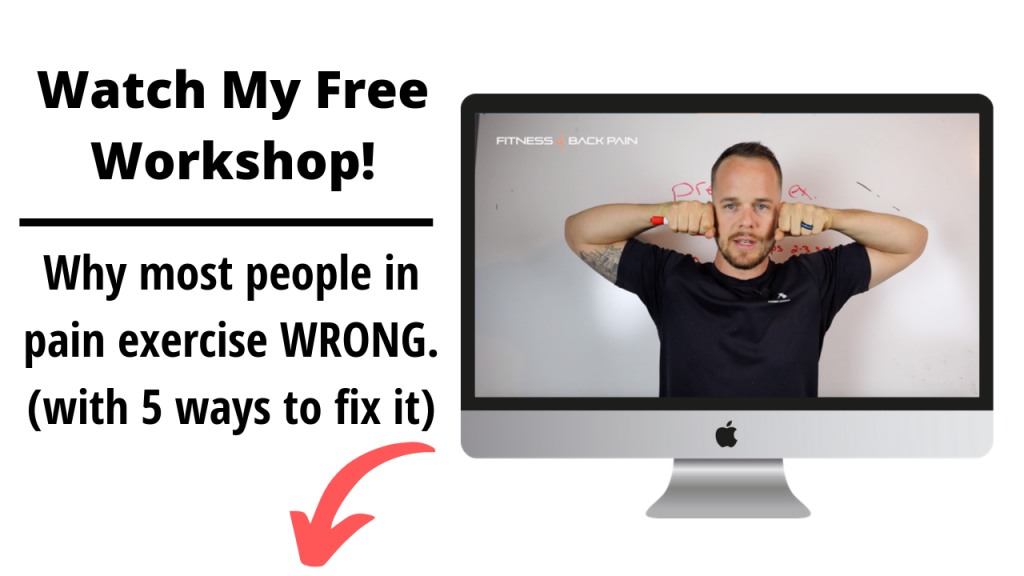

This is such a great article. Love debunking fitness myths. They’re so pervasive and yet can be really damaging. Thanks so much for sharing!
William,
I am now one year post surgery and have the joy of two rods (12″) and screws (#12) in my back. I have been very committed to strengthening (internal obliques,etc.) for core prior to and working my way to strength post.
Trying to play golf but that torgue is tough on me. Moving is important for me and the surgery is a success,
HOWEVER, the last few weeks, more pain and have noticed very tight erector spinae down the right side which has resulted in severe cramping in hamstring, gastrocs and into the foot. UGH! Stretching every day and wondering should I look to your exercises before contacting a coach to help strengthen/stretch?
I love that you “have been there” and read your info religiously!
Hey Judy,
These are my thoughts: (1) Always remind yourself that you are NOT defined by your diagnosis or any procedure you have had done. Despite your circumstances you are not broken. You have obstacles which will bring different paths to take but regardless, you will passionately pursue the best life (pain wise) that you possibly can. (2) Golf does come with a lot of Torque, what i would first suggest is finding the range or rotation and torque that you can do successfully without a flair up and work with that and slowly add resistance to that twisting (to strengthen it) or increase the torque or rotation a little at a time until your body is not longer scared to take on that kind of load. The tightness could be from instability so in this case ye something like Core Essentials may be really good for you. Once you get through the basic stuff we can add in more Golf based work and see how your body responds.(3) I would pull back on stretching. More then likely the stiffness is your body trying to balance a compensation or a muscle not firing like it should so stretching the tight muscles may cause it to clamp down even more. I made this mistake for years and it wasn’t until I let go of stretching and worked more on releasing and strengthening that I started to see the light.
Hi
My back problem is degenerative disc disease, and RA. But, I swim m a lot, and also have a farm. So I am always moving, exercising in one way or another. But, as you can guess, am always in pain. I also have the facet joints really acting up. I have had injections, blah blah. Bandaids. Are there any specific exercises that could improve my back and my quality ?
Hey Tonie,
No matter what your situation may be I always want to stress to anyone I talk to, “more activity” doesn’t necessarily mean relief. Everything needs to be taken in dosages and strides. You may be doing too much activity for your own personal pain threshold. Not that You are not able to do these activities but your bodies ability to maintain healthy positions during this activity is key. Most people work up to the point where they are in pain and at that point it doesn’t matter how good of posture you have, the inflammation and irritation is in full affect. I would take a look at spending time perfecting and understanding the key movement habits such as glute engagement, hip hinging and good shoulder and neck position. From there add “stress” or activity to test the integrity of these new posture habits. Increase in difficulty as you get better and can do them without pain.